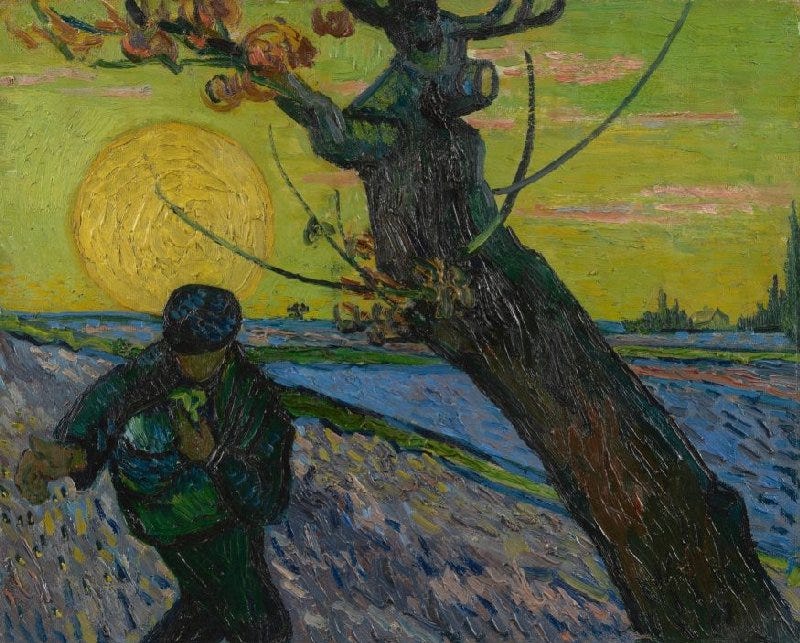To maintain a path
On gift shop finds, walking, and the Apostle Peter
I was in the Tate gallery in London a few months ago, and found myself in the gift shop1 after consuming a good portion of my “art diet” for the day. I glazed over the high-quality pen and paper collections, the incredible (and expensive) crafts for kids, and landed comfortably in front of the book collection.
In the days prior, I had spent some time in the English countryside, walking old streets and through fields on well worn foot-paths. I had made my way through Hyde Park a few times, taking note of the way specific patches of grass were left un-mowed in order to maintain a habitat for natural wildlife within the city of London. Sitting on the grass with a book in hand (which I did not read), I watched the walkers who were out and about. They seemed to know of certain trails through the tall grass and wildflowers, trails that remained hidden from my stationary point of view. Apparently others had walked those paths before them.
Looking at the bookshelf in the Tate, I was quickly drawn to one entitled, “In Praise of Paths,”2 which was written by a man who became an avid walker after losing his ability to drive due to a seizure disorder. I never would have sought this book out or known to look it up— the topic of walking seems like such an obscure and even elementary thing to write about. But as I flipped through the introduction, I was pulled swiftly into the lush scenery and deep attentiveness of this author as he narrated his re-entry into the sensory experience of traversing the world on foot. It was beautiful, simple, even wise. Though the author may not have intended it this way, one particular gem that I found in his work hit a deeply spiritual note. To maintain a path is to walk it.3
When I was growing up in the mountains of rural North Carolina, I would regularly walk out into the woods, find a “deer path” as I called it, and follow it to my hearts content. The deer had done the work for me. They had found a convenient way to repeatedly travel the terrain, moving from the creek up to the fields, and back again. They maintained the path. And in a small way I participated in the maintenance too— simply by following.
What are the paths I want to maintain? What are the paths I’m walking regularly, but could (should?) choose to abandon? What is meant by those repeated Gospel words: Follow me? There is something mundane, exhilarating, and scary about them. This simple invitation and complex command bookends the conversations recorded between Jesus and Peter in the Gospels.4 How must those words have hit Peter the first time? How must those words have hit Peter after he had been such a coward and a failure? How must they have hit after he saw where Jesus went?
Follow me— a beautiful statement of grace re-extended; a necessary reminder that Someone had gone before. The path (in all its horror and glory) had been traveled before. To maintain a path is to walk it. Follow me.
A good friend of mine swears that gift shops in art museums are the best places to find gifts— she has not been wrong thus far.
By Torbjørn Ekelund
“In Praise of Paths,” page 26
“‘Follow me,’ Jesus told [Simon and Andrew], ‘and I will make you fish for people.’” -Mark 1:17 CSB
“After saying this, [Jesus] told [Peter], ‘Follow me.’” -John 21:19b CSB



The simplicity of that invitation is amazing, is it not?
It recently has hit home in a deeper way after being immersed a little in John Mark Comer's work and writing. He uses the terms "follower of The Way", "apprentice of Jesus", "practicing the ways of Jesus" as models for the Christian life. A much needed simplicity, yet with so much richness to be plumbed in the following.